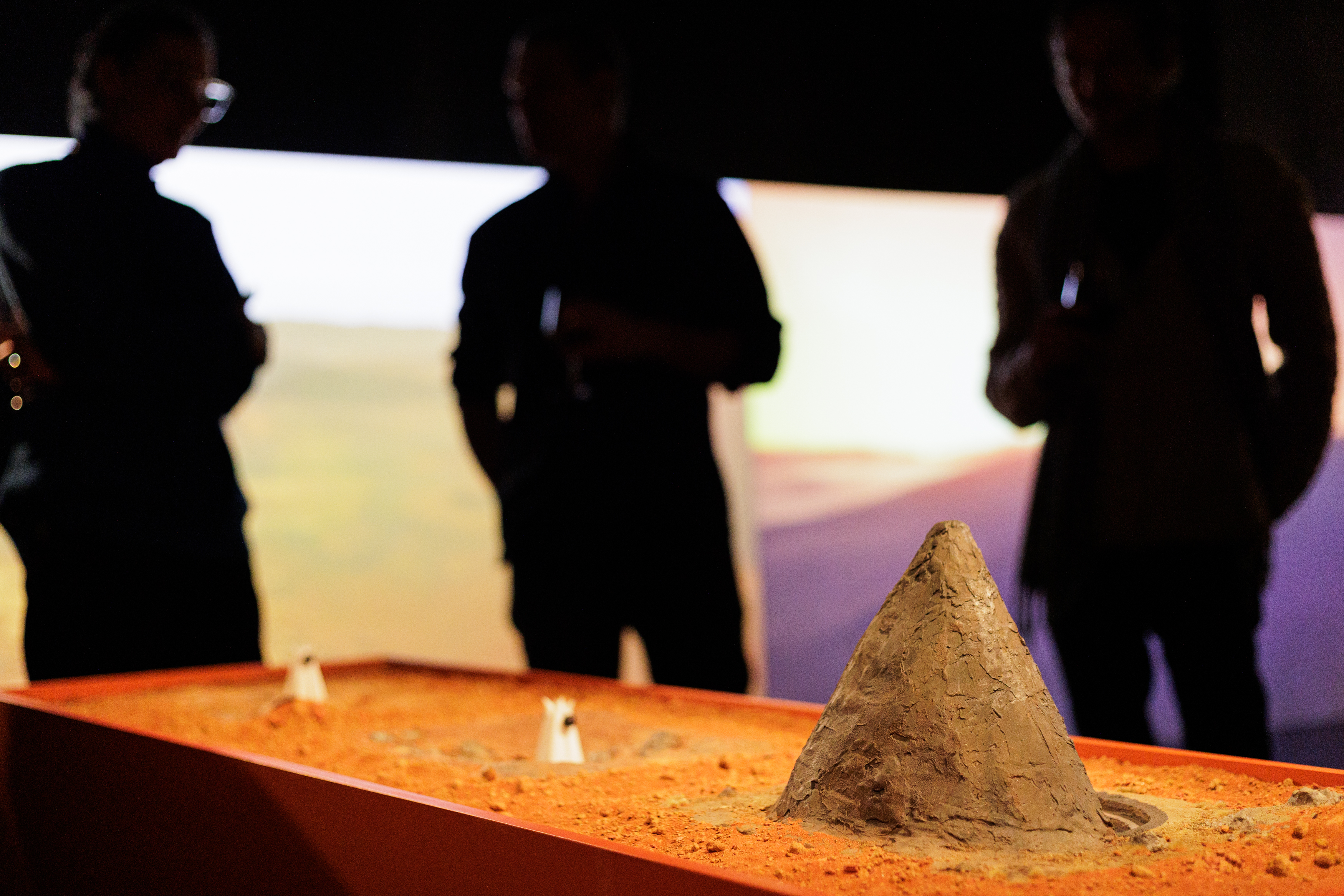2.8 billion years from now, the average global temperature on Earth will reach 147 Celsius. The final vestiges of life, simple sub-terrestrial microbes taking refuge at the poles, will become extinct. This hugely significant moment in Earth’s history will pass by unnoticed. The project 2.8B420K proposes a monument, known as ‘The Object’, to commemorate this transition from biological to post-biological, and mark the end of all life on Earth.
The exhibition was opened with a discussion with the artist Andy Gracie and researchers in the fields of geology, art history and anthropology Rok Brajkovič, Blaž Vičič, Matthew Wolf-Meyer and Beti Žerovc. The discussion was moderated by Tjaša Pogačar.
COLOPHON
Concept and design: Andy Gracie
Exhibition text by: Andy Gracie
Curator: Tjaša Pogačar
Production: Projekt Atol (Tjaša Pogačar, Uroš Veber):
Technical diagrams, fabrications: Ali Yerdel
Production of exhibition furniture and technical assistance: Valter Udovičić
Research assistance and consultations:
Nuria Llorca Isern – Department of Materials Science and Engineering, University of Barcelona
Rok Brajkovič – Geological Survey of Slovenia
Blaž Vičič – Quantectum AG
Beti Žerovc – Faculty of Arts, University of Ljubljana
Matthew Wolf-Meyer – Institute for Advanced Study, Tampere University
Production: Projekt Atol
Supported by: konS ≡ Platform for Contemporary Investigative Art, University of California: Systemics Lab – Media Arts and Technology, Ministry of Culture of the Republic of Slovenia, European Regional Development Fund of the European Union, City of Ljubljana
PHoto: Matjaž Rušt
CV
Andy Gracie works on the intersection of art and science and within various disciplines such as installation, robotics, sound, video and biology. His artistic practice is characterized by an in depth engagement with process, scientific methodologies and the nature of experiment. Here ‘experiment’ refers both to the act of acquiring knowledge and information through testing scenarios, and to the act of trying out unknown or untested processes. He is interested in how as humans we imagine, simulate and inhabit scenarios that test our understanding and our imagination of the future. The current expression of these ideas is in a body of work that outlines the psychology, culture and aesthetics of disaster and the impermanence of humanity on a cosmic scale.
